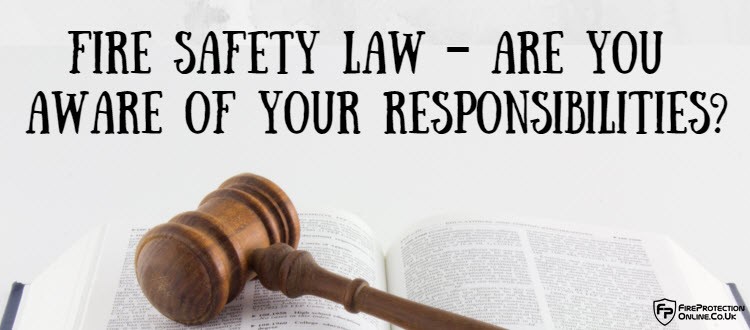
The Regulatory Reform (Fire Safety) Order 2005 replaced more than 70 separate laws on fire legislation in England and Wales in 2006. Now, it is commonly referred to as the Fire Safety Order (FSO).
Before the FSO, the fire service had the responsibility of inspecting businesses to ensure their buildings were safe. But that responsibility now falls to the owner, occupier or employer, as the ‘responsible person’.
Just like any job, this can get delegated to a competent person. But the ultimate responsibility still lies with them.
What Are My Responsibilities?
You must:
- carry out fire risk assessments which identify any potential dangers or risks,
- consider who the relevant people are who have the greatest risk,
- remove or reduce the risk of fire as much as possible and provide general fire precautions,
- ensure fire safety equipment is operational and maintained, and provide appropriate training,
- prepare an emergency plan and advise everyone on their duties,
- keep a record of any findings, and review risks regularly.
When you are considering any relevant people, you have to consider anyone who is in the building at the time of a fire. This includes employees, visitors and members of the public, depending on the location.
Your employees also have to play their part in maintaining fire safety. Firstly, they must co-operate with you on any fire safety matters.
They must also not act in a way which puts themselves or others at risk and inform those responsible of any workplace dangers. Of course, if you look after the safety of your staff, they are likely to be more than happy to help you to comply.
Penalties And Enforcement
Any breaches of the Fire Safety Order fall under criminal law. This means that cases get heard in Magistrates’ Courts where fines of up to £20,000 can get issued.
More serious breaches get referred to the Crown Courts. Here, the maximum penalty is unlimited and can impose prison sentences of up to 2 years.
But before it gets to that stage, it’s likely that enforcement officers will issue notices to the ‘responsible person’. There are three different levels of notice that are issued if there is an unacceptable level of risk.
Alterations notices are given for any risk which is because of a physical change of a building, or its use has changed. The responsible person will need to make changes accordingly.
An enforcement notice is given when you have failed to comply with the Fire Safety Order and not followed recommendations.
When there is an immediate danger to individuals, a prohibition notice is given. This type of notice will prevent an activity from being carried out, or stop a workplace from being used.
Failing to comply with a notice is a criminal offence. Alterations and enforcement notices can be put on hold if you decide to appeal. But prohibition notices will stay in force until you meet the conditions stated in the notice.
The Fire Safety Order is only in place to protect everyone. It helps businesses to follow good fire safety practices, can help to prevent fires and save everyone should a fire occur.
The risk of not meeting the Fire Safety Order can be costly. Not only to your wallet but to lives and livelihoods as well.
So ensure you are taking your responsibilities seriously. And make sure you’re doing everything in your power to protect your workforce, and everyone else.
This information is only a summary of the main rights and responsibilities covered by the legislation. For a comprehensive list, please refer to the legislation here.